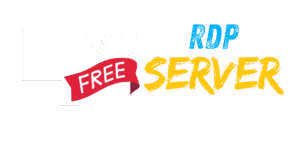
Introduction to Azure RDP Solutions
Remote Desktop Protocol (RDP) is essential for managing Azure virtual machines and cloud resources. While Azure provides built-in RDP capabilities, many users seek free third-party tools that offer enhanced features, better performance, or alternative connection methods.
In this guide, we’ll explore the best free RDP tools for Azure, their features, and how to use them effectively for managing your cloud infrastructure.
Built-in Azure RDP Options
Before looking at third-party tools, it’s worth noting Azure’s native solutions:
- Azure Bastion: A fully managed service that provides secure RDP/SSH connectivity
- Virtual Machine Connect: Browser-based RDP directly from the Azure portal
- Download RDP File: Azure generates RDP connection files for local Remote Desktop clients
These built-in options are secure and integrated with Azure’s identity management, but may lack some advanced features.
Top Free RDP Tools for Azure
1. Remote Desktop Connection Manager (RDCMan)
Features:
- Tabbed interface for multiple connections
- Credential management
- Group organization of servers
- Free from Microsoft (though no longer officially supported)
Azure Integration:
- Works with downloaded RDP files from Azure portal
- Can store connection details for frequent Azure VM access
2. mRemoteNG
Features:
- Open-source multi-protocol remote connections manager
- Tabbed interface with docking panels
- Supports RDP, VNC, SSH, and more
- Credential management with encryption
Azure Benefits:
- Organize Azure VMs by resource group
- Quick switching between development/test/production VMs
3. FreeRDP
Features:
- Open-source RDP client implementation
- Command-line interface for automation
- Cross-platform (Windows, Linux, macOS)
- Supports advanced RDP features
Azure Use Cases:
- Scripting connections to Azure VMs
- Lightweight client for Linux systems accessing Windows Azure VMs
4. Remmina (Linux)
Features:
- Primary RDP client for Linux systems
- Supports RDP, VNC, SSH, and other protocols
- Plugin architecture for extended functionality
- Connection profiles with credential storage
For Azure Linux Users:
- Ideal for Linux admins managing Windows Azure VMs
- Can integrate with Azure CLI for dynamic connection management
5. Royal TS (Free Version)
Features:
- Tabbed multi-connection interface
- Supports RDP, SSH, VNC, and web-based interfaces
- Limited to 10 connections in free version
- Credential management
Azure Advantages:
- Clean interface for managing multiple Azure VMs
- Documentation features for noting VM purposes
Security Considerations for Azure RDP
When using free RDP tools with Azure:
- Always use NSGs: Configure Network Security Groups to restrict RDP access
- Enable Just-in-Time access: Azure’s JIT feature limits RDP exposure
- Multi-factor authentication: Combine with Azure AD MFA
- VPN or Bastion: Prefer these over direct public RDP when possible
- Regular updates: Keep both your RDP client and Azure VMs patched
Optimizing RDP Performance in Azure
To get the best experience with free RDP tools:
- Choose the right VM size: B-series burstable VMs work well for light RDP
- Enable RemoteFX: For GPU-accelerated RDP (when available)
- Adjust display settings: Reduce color depth and disable animations
- Use proximity: Connect to Azure regions closest to your location
- Monitor performance: Use Azure Metrics to identify bottlenecks
Advanced Free Tools for Azure RDP Management
1. Azure CLI/PowerShell for RDP Automation
Script RDP connections with:
Get-AzRemoteDesktopFile -ResourceGroupName "MyRG" -Name "MyVM" -LocalPath "C:\Temp\MyVM.rdp"2. Terraform RDP Configuration
Manage RDP access as infrastructure-as-code:
resource "azurerm_network_security_rule" "rdp" {
name = "AllowRDP"
priority = 100
direction = "Inbound"
access = "Allow"
protocol = "Tcp"
source_port_range = "*"
destination_port_range = "3389"
source_address_prefix = "My.IP.Address"
destination_address_prefix = "*"
resource_group_name = azurerm_resource_group.example.name
network_security_group_name = azurerm_network_security_group.example.name
}Troubleshooting Common Azure RDP Issues
When using free RDP tools with Azure VMs:
- Connection Timeouts:
- Check NSG rules
- Verify VM is running
- Confirm public IP (if using direct connection)
- Credential Problems:
- Reset VM password via Azure portal
- Check local account vs. domain account
- Performance Issues:
- Reduce display settings
- Check Azure VM CPU metrics
- Try from different network locations
Conclusion
Free RDP tools can significantly enhance your Azure management experience, offering features beyond the basic built-in options. Whether you choose mRemoteNG for its multi-protocol support, FreeRDP for scripting capabilities, or stick with Microsoft’s RDCMan, these tools can make working with Azure VMs more efficient.
Remember that while these tools are free, always prioritize security when configuring RDP access to your Azure resources. Combine these tools with Azure’s security features like Just-in-Time access, Network Security Groups, and Azure Bastion for a robust remote management solution.
For occasional use, Azure’s native RDP options may suffice, but for administrators managing multiple VMs daily, these free tools can be game-changers in productivity and organization.


Leave a Reply